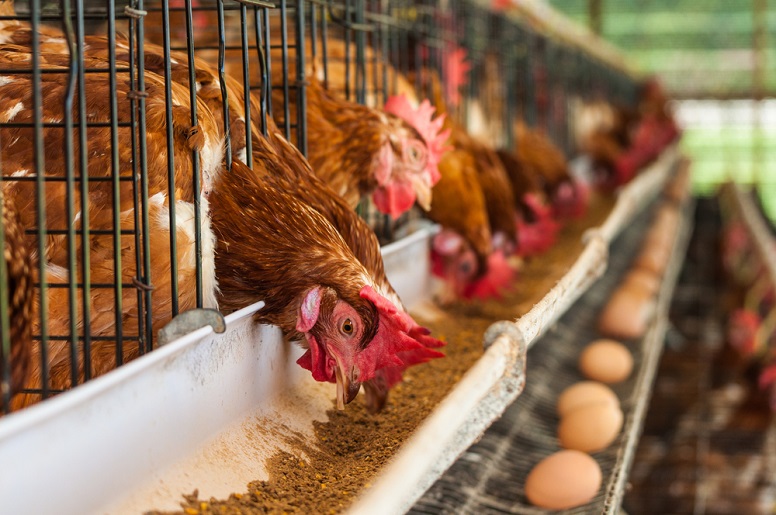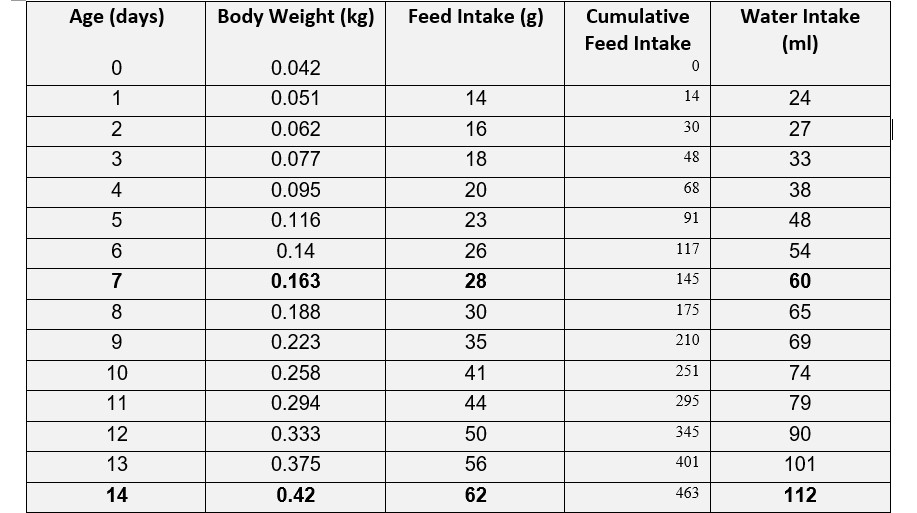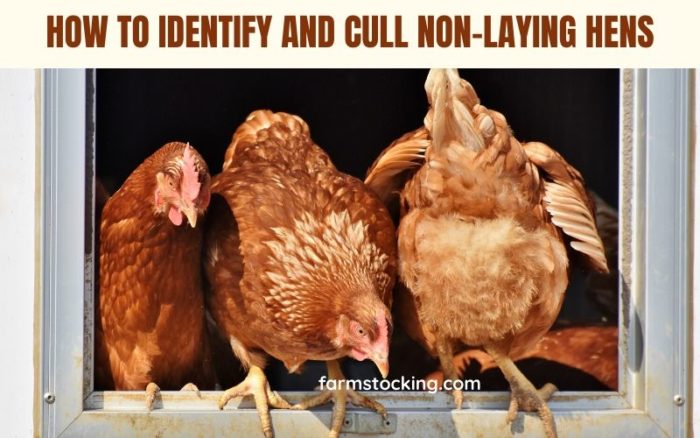Poultry keeping involves raising and rearing domestic birds of all types, including chickens, turkeys, ducks, quail, and other fowl with the aim of getting meat, eggs and other byproducts from them.
It’s both an art and science. Layer farming is an aspect under poultry farming that has to do with raising egg-laying poultry birds for commercial egg production.
Layers are a special breed of hens that have to be raised from when they’re a day old and start laying eggs commercially from eighteen to nineteen weeks of age. This write-up explains how to start a layer farm in Nigeria.
Difference between Layer and Broiler Birds
Broiler birds are the type grown for meat consumption. However, layers birds are used for egg production in large quantities, hence the term “layers”.
While layers birds are well-known for commercial egg production, they’re also important as a source of meat.
What Are Layer Breeds?
Depending on the nature of eggs and their color, layer hens can be grouped into 2 types: white egg-laying hens and brown egg-laying hens.
White Egg Laying Hens — this breed hens are relatively smaller in size. Also, they eat relatively lesser food.
The color of the eggshell is white.
Popular white egg-laying chickens include the following:
- Isa White
- Nikchik
- Lehman White
- Havard White
- Bab Cock BV-300
- Sever White
- Hi Sex White
- Bovanch White
- Hy-Line White
Brown Egg Laying Hens — these layer hens are comparatively larger in size and eat more foods, in comparison with white egg layers.
They also lay bigger eggs than other laying breeds, and their eggshell is brown. Several kinds of brown layers are available:
- Isa Brown
- Sever 579
- Hi Sex Brown
- Hy-Line Brown
- Lehman Brown
- Gold Line
- Bab Cock BV-380
- Bablona Harko
- Havard Brown
- Bablona Tetro
- And others
Brown egg-laying hens are perfect for commercial layer poultry farming.
Selecting Layer Hen
Before you carry out the selection process for your egg layer farming business, it’s crucial to note some essential information.
First, consider selecting the breeds suitable for the layer poultry farming, which can produce well in your area. For commercial egg production, it’s crucial to choose highly productive laying hens correctly.
All kinds of hens don’t yield the same number of eggs, and ensure the chosen breeds have high production capability.
If your selected breed has the desired trait and is well-known for egg production, then you can consider the breed as suitable for business.
You should always buy healthy chicks from a famous and reputable hatchery.
Systems You Can Use for Layer Housing
Two methods or systems you can make use of in raising layer chickens are explained as follows:
Battery Cage System
In this system, there are organized cages in the chicken house for separating the feed, water, and how the eggs will stay when they’re laid.
Deep Litter System
Here, you’re required to cover the concrete floor using rice hulks, wood shavings, or chopped wheat straw and hang the water and feed containers to ensure they’re within reach of the chickens
How to Keep Chicks for Layer Poultry Farming
You’ll find that during the first weeks after birth, a lot of chicks don’t want to drink water as a result of their transportation from one place to the other.
This is why you must design adequate water drinking systems in their brooder house, and you must train them to drink water.
To ensure they can easily get energy, you can mix 5 percent glucose with water and give them any kinds of quality multivitamin such as Vigorlite Multivitamin and Amino Acid Supplement by mixing with water.
Multivitamin and electrolyte work magically when you transport your chicks from a long distance.
Not only does it reduce tiredness and lack of water, but also helps make the chick normal.
Importance of Vaccination for Layer Poultry Farming
A vaccination program is essential for your chicks to keep them safe from all kinds of diseases. These are the primary benefits of poultry vaccination:
- Vaccination, administered timely, develops disease-resistant power in a chick’s body
- Helps in reducing disease prevalence
- Helps in keeping your hen free from infective poultry diseases
- Lower mortality rate which means more production and more profit
Vaccination & Medication Schedule for Layers
Below is the vaccination schedule for layers.
| Age | Vaccine | Route |
|---|---|---|
| Day 1 | Marek's Disease | Given at the Hatchery |
| Day 9-14 | Newcastle Disease (NDV) | Drinking water, eye drop |
| " | Infectious Bronchitis (IBV) | Drinking water |
| Day 14 | Gumboro/Infectious Bursal Disease (IBDV) | Drinking water |
| Day 28 | Gumboro/Infectious Bursal Disease (IBDV) | Drinking water |
| Week 4 | Newcastle Disease (NDV) | Drinking water or eye drop |
| " | Infectious Bronchitis (IBV) | Drinking water |
| Week 8 | Fowl pox | wing web jab |
| " | Avian Encephalomyelitis (AE) | wing web jab |
| Week 9 | Infectious Coryza 1 | Intramuscular |
| Week 10-11 | NDV (Komarov Strain) | Intramuscular |
| Week 12 | Infectious Coryza 2 | Intramuscular |
| " | Infectious Bronchitis (IBV) | Drinking water |
| Week16 | Laryngotracheitis | Spray or eye drop |
| Week 17 | ND + IB + EDS (3 in 1 Vaccine) | Intramuscular |
Here are some rules to observe before vaccinating your layer chickens:
- Handle the chickens with care
- Perform vaccination for the chickens without any strain
- Use hot boiled water or Viraclean for washing the vaccination tools
- It’s not necessary to vaccinate your ill hen
- Preventive vaccination always applies to a healthy bird, so there’s no need to vaccinate an infected bird
- Carry out the vaccination in cold weather condition
How to Keep Growing Layer Chickens
It’s crucial to follow the suggestions below to keep growing layer chicks:
- Give special care to the growing chickens until they attain 4 to 5wks of age.
- After brooding, consider serving them pellet feed of good quality. This will produce nice results for you in the future as they’ll yield eggs in a large quantity. Also, high-quality pellet improves your chickens’ health and increases their body weight.
Production of Eggs in Layer Poultry Farming
To produce eggs in layer poultry farming, it’s important to ensure adequate care and farm management.
When you take proper care of your birds and manage them well, you’ll be able to realize high production and profit.
Do take note of these tips:
- Around 5 percent of hens start laying eggs within the first twenty weeks of age
- Roughly 10 percent of birds start laying at their twenty-one weeks of age
- On reaching 26–30 weeks of age, they become highly productive, though, the rate could be slightly different based on the strain in question
- After they’ve laid a maximum number of eggs, the birds often stop laying for some days
- After this period, you might notice that their egg production decreases gradually
- Egg-laying rate and size of eggs slowly increase
- The hens’ growth continues till their forty weeks of age
- Weight and size of eggs increase till they reach fifty weeks of age
Preparing Feed for Egg Layer Farming
Throughout the world, we’ve several companies specialized in the production of commercial feed as well as feed supplements for layer chickens.
In Nigeria, there are various options. Alternatively, you can produce the feed at home.
Ensure the feed and feed supplements you purchased come enriched with essential food value.
For layers, protein, vitamins, and minerals are essential as they’ve have an impact on the egg quality, layer bird’s health, and layer poultry fertility.
Keep the following in mind:
- Use 2 percent of calcium for 2 weeks after birth
- Serve starter feed for 8 weeks (2 months) if you observe they’re not gaining weight as expected
- Consider serving feed 2 – 3 times daily till their 18 weeks of age
- When the birds start laying, feed demand increases rapidly
- Consider serving them layer poultry feed based on their age and weights
- Avoid reducing the feed amount while laying even if you notice any increase in weight
Apart from these, to reduce mutual fights and avoid food wastage, we recommend you cut the lip of your laying hens.
How to Ensure Water Management in Your Layer Poultry Farm
To ensure your chickens’ health, provide them with pure, clean, and fresh water for drinking. Give your laying hens water adequately based on their demand.
To purify the water, you can mix Aquacure.
Look for a suitable place for keeping the water pot inside your poultry house.
During hot weather and summer season, provide them with cold water. But use slightly hot water in winter season or cold weather.
Based on the age and species of chickens, the provision of food can control the weights of chicken.
Make use of sufficient calcium, phosphorus, vitamins, amino acid, and the likes in their food. By following the methods explained above, you’ll be able to reap better profit from your layer poultry farming business.
Marketing Your Eggs and Selling Them
On picking your eggs, the next thing is to arrange them neatly in creates. They’re now ready for customers.
Before you get to this stage, you should have marketed your eggs immediately your layers started laying eggs to encourage customers and sell fresh eggs.
Simply take a small quantity of the produced eggs and offer them for sale to shop owners in markets, supermarkets, hotels, and others.
As with all businesses, you’ve to be hard-working to succeed in the layer poultry farming business in this country.
Diseases of Laying Chickens
These include:
- Salmonellosis
- Newcastle disease
- Marek’s disease
- Colibacillosis
- Fungal Disease
- And others
In poultry keeping, you can raise and rear domestic birds of all types, such as chickens, turkeys, ducks, quail, and other fowl to obtain meat, eggs, and other byproducts from them.
Closing Thoughts
Egg layer farming — if properly done with hard work and persistence — is a lucrative business. This guide, we hope, has been of help to you in learning how to start a layer farm.





Reach information